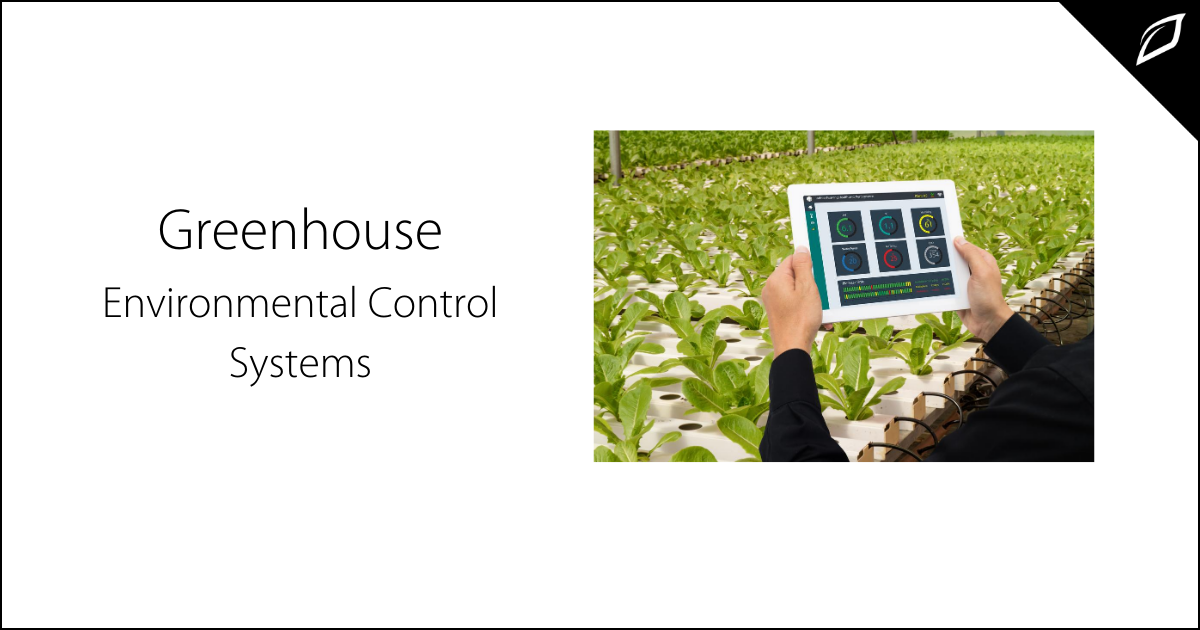How Smart Greenhouses Increase Profits
Agriculture has never been a get-rich-quick venture. Even in the best of seasons, commercial greenhouse profit margins may be slim. Let's explore the...
1 min read
Joy King : Jan 11, 2021 4:00:00 AM

In a world where technology moves at an unprecedented pace, commercial growers require productivity and predictability in their greenhouse technology. Let's look at ways technology helps growers increase yields, improve productivity, and provide peace of mind.
What is Greenhouse Technology?
Greenhouse Technology is the technique of creating beneficial environmental conditions for plants or crops, along with automation. While it's used primarily to protect plants from unfavorable climatic conditions, it's evolved to provide increased yields and reduced labor and resource costs. As a self-contained environment, greenhouses are easily controlled. Commercial growers now have a wide range of technologies to ensure the highest productivity levels with minimum labor.
The modern smart greenhouse represents the convergence of sophisticated scientific know-how available from various software and hardware solutions.
Greenhouse Controllers
Greenhouse environmental controllers deliver a high level of greenhouse management efficiency through automation, allowing growers to maximize their yields while lowering expenses. Smart motor controllers can open and close vents, turn on or off lights, all from the palm of your hands via smartphone apps. Controllers are pre-programmed with predetermined specifications based on criteria received from sensors located throughout the greenhouse. Let's dive into sensors.
Sensors
Sensors throughout a greenhouse measure temperature, humidity, CO2, light, and VPD, WC, and EC so that your grow room controller can automatically adjust conditions to ensure your growing environment has the ideal conditions at all times. You'll spend less on labor and save hours by monitoring the dozens of variables that go into greenhouse management virtually through an app. The sensor feeds crop level data to an operating system that controls motors to open or close based on triggers. Now let's examine how automation brings it all together.
Automation
By automating processes, growers can increase crop yields by ensuring a consistent environment and saving money by lowering energy use and decreasing labor costs. Better yet, this means growers have the time and energy to pursue business expansion, collaborations, or other interests. The internet of things (IoT) delivers a robust solution with sensor triggers and automation to fully complete the cycle.
Data: Greenhouse controllers can track data over time, giving the grower insight into which combinations of irrigation, nutrition, lighting, and humidity promote the highest yields. Leveraged across multiple harvests, this data can help growers maximize their output while making effective use of resources and minimizing operating costs.
Final thoughts:
Growers can easily implement ready-made systems to maximize crop quality and production while optimizing energy use, labor, and other operating expenses. With the right controller, growers can do more with less, increase energy efficiency, create more ideal and accurate growing environments, and boost the bottom line.

.png)
Agriculture has never been a get-rich-quick venture. Even in the best of seasons, commercial greenhouse profit margins may be slim. Let's explore the...

What are environmental control systems? As any expert will tell you, a growing environment is more than just the air temperature. It's a potent...

The modern greenhouse maintains a growing environment that is about more than just the air temperature, combining multiple factors that impact plant...